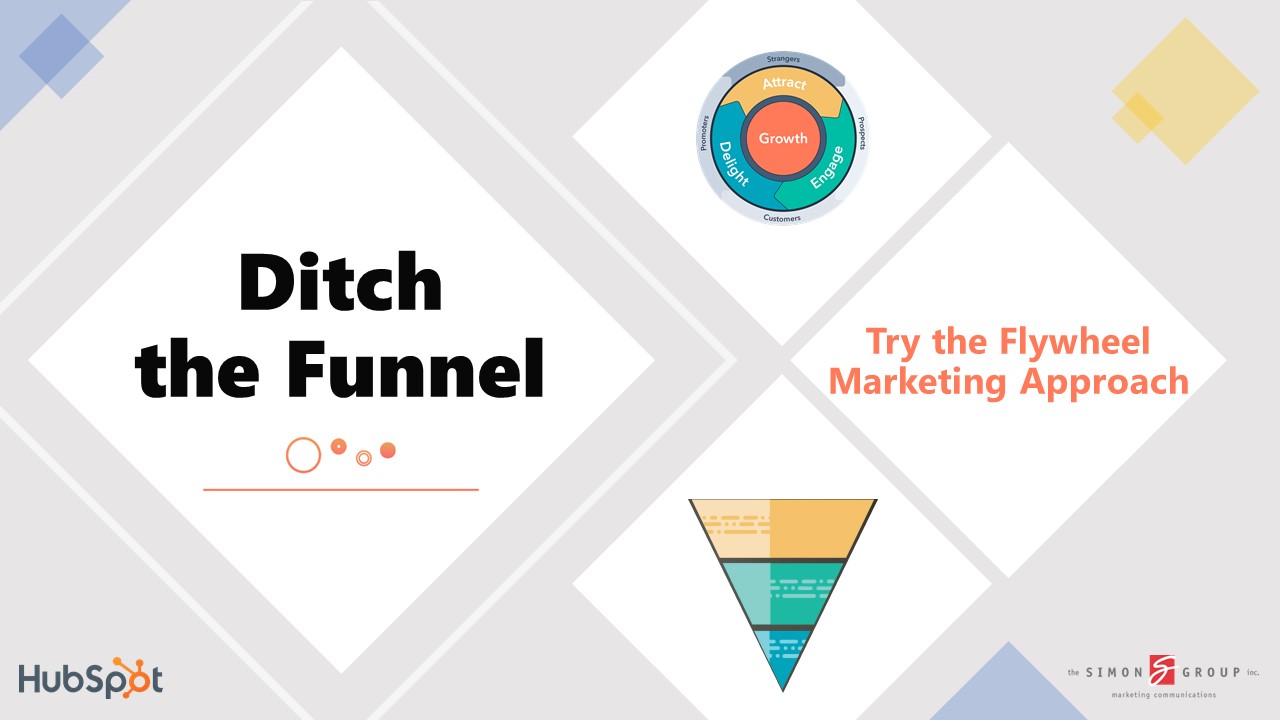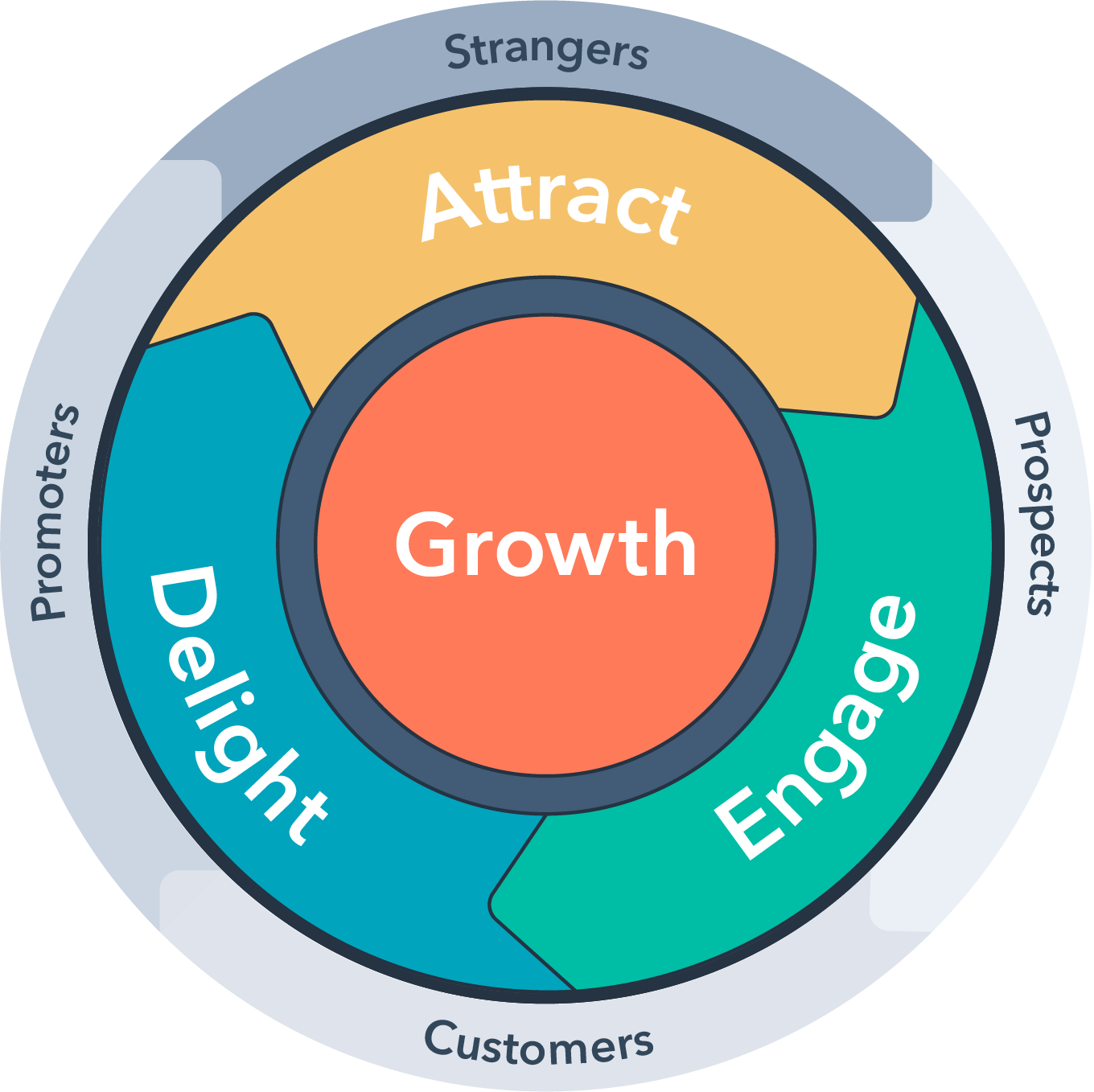We have all heard of funnel marketing: the use of an upside-down funnel showing the breakdown of a customer’s journey. At the top of the funnel potential customers ‘funnel’ in and begin to learn about your business, and then continue down to the bottom where they purchase your product. Here are some tips to attract, engage and delight your customers and help grow your business.
Funnel Marketing – Does it Really Work?
Although it appears that this strategy has worked over the years, has it really? Yes and no.
The funnel marketing concept works to a point, but then treats customers as an after-thought. It works to make customers aware of companies, and pushes them towards a final sale, but then the cultivation of the customer ends there.
The funnel concept just creates output. It doesn’t look at the big picture, the long haul, how to create a repeat customer. How to create a relationship. If your marketing strategy can’t accomplish any of these things, then you are taking the wrong tactic.
 In the funnel strategy, momentum is lost at the bottom of the funnel. Nothing happens with the customer once they have purchased the product or service your company is offering. The funnel approach doesn’t take into consideration what happens after the sale. Do customers simply move on? If that was the case, how do repeat customers happen? How do current customers influence and shape the experience of potential customers?
In the funnel strategy, momentum is lost at the bottom of the funnel. Nothing happens with the customer once they have purchased the product or service your company is offering. The funnel approach doesn’t take into consideration what happens after the sale. Do customers simply move on? If that was the case, how do repeat customers happen? How do current customers influence and shape the experience of potential customers?
And what’s worse is that you need to start over and over again to find new customers to fill that funnel and convert their interest into a sale. It’s like being on a hamster wheel when you use the funnel strategy in marketing.
For years, sales and marketing teams have looked at this cycle as a funnel, even though we knew this wasn’t the most accurate representation of what was truly happening. What if there was a way to represent the strategy that continued to engage customers long after their initial purchase? What if you could make this customer a customer for life? What if this customer acted as an extension of your marketing team? What if there was a new way to look at how to strategize your marketing plan? Would you consider trying it? Well, there is a strategy that does all of that and it’s called the flywheel.
Flywheel Marketing Strategy
The flywheel marketing model has a simple goal: it creates relationships. It doesn’t just close the deal. And believe it or not, at some point, the model also incorporates the funnel. So, what exactly is flywheel marketing and why would you want to implement it for your business?
Flywheel marketing is represented by a more continuous journey than a funnel. A flywheel is a wheel that builds momentum and keeps turning until something physically stops it. According to HubSpot, the creators of the flywheel cycle, the model places customers at the center of your business model. It attracts customers, engages them and then delights them.
So, what does that all mean? Let’s break it down.
Attract, Engage, Delight Your Customers
In order for you to succeed selling your products or services you must align your company’s goals with your customer’s goals. By doing this, you start a  cycle that will begin to build on itself and create relationships. The cycle is attract, engage and delight.
cycle that will begin to build on itself and create relationships. The cycle is attract, engage and delight.
Attract: Use your expertise to create meaningful content for, and conversations with, potential customers. This will begin relationships with the right people; people who are interested in what you have to say and have an interest in your products or services.
Engage: Build lasting relationships with the customers that you have attracted. Provide insights and solutions that align with their pain points and goals.
Delight: This is where you provide your customers with and outstanding experience through superb products and excellent people that help them reach their goals. Delight your customers so much that they become an extension of your marketing team.
How Does It All Work?
Yes, it is great to say we are going to attract, engage and delight customers, but how do we actually do that? How does that work? It works through inbound methodology. This methodology works by growing an organization through the creation of lasting relationships with people and helping these same people reach their goals. When your customers succeed, you succeed. The circle of attract, engage and delight forms a loop cycle and accelerates on momentum. Just like an actual flywheel.
The flywheel rotation represents growth of your company. Happy customers add force to your flywheel by promoting your company. Ways to do this include:
- Investing in SEO to attract leads
- Create and promote quality content on your website
- Offer content that has a solution to your customers’ problems
- Use content marketing to identify the best way to achieve your goals
- Target your audience with journey-based advertising
- Adapt a conventional advertising strategy
This is also where the flywheel model and the funnel model are fundamentally different. The flywheel’s cycles build on themselves. Additional customers are fed into the flywheel through word of mouth by the happy customers you have built a relationship with over time. This is different than the funnel because you no longer have to start from square one each month and fill a funnel with new customer prospects.
Force and Friction
So, you may be asking, what is the force mentioned earlier? What does it mean when it comes to the flywheel model and how do I add it? What is friction and how do I avoid it?
Force are things that help to grow your business, like:
- · Great employees
- · Excellent product
- · Strong brand
- · Happy customers who refer friends
Friction are things that can harm your business and actually make you lose customers, like:
- · Ineffective sales process
- · Subpar products
- · Spammy marketing techniques
- · Uncoordinated customer facing team
The Flywheel as a Business Strategy
The flywheel model will help you rethink your customer journey so you can update your sales and marketing methods. There is still room for the funnel within this model, but it is generally used in the sales process. The flywheel helps companies attract customers with useful content, eliminate barriers and convert sales. Instead of starting over with a new funnel for each potential customer, think of how all your previous customers, lost customers, and current customers will help you shape the experience of potential customers to come. It all builds to a better marketing and sales process for your team, and a better experience for your customers.
